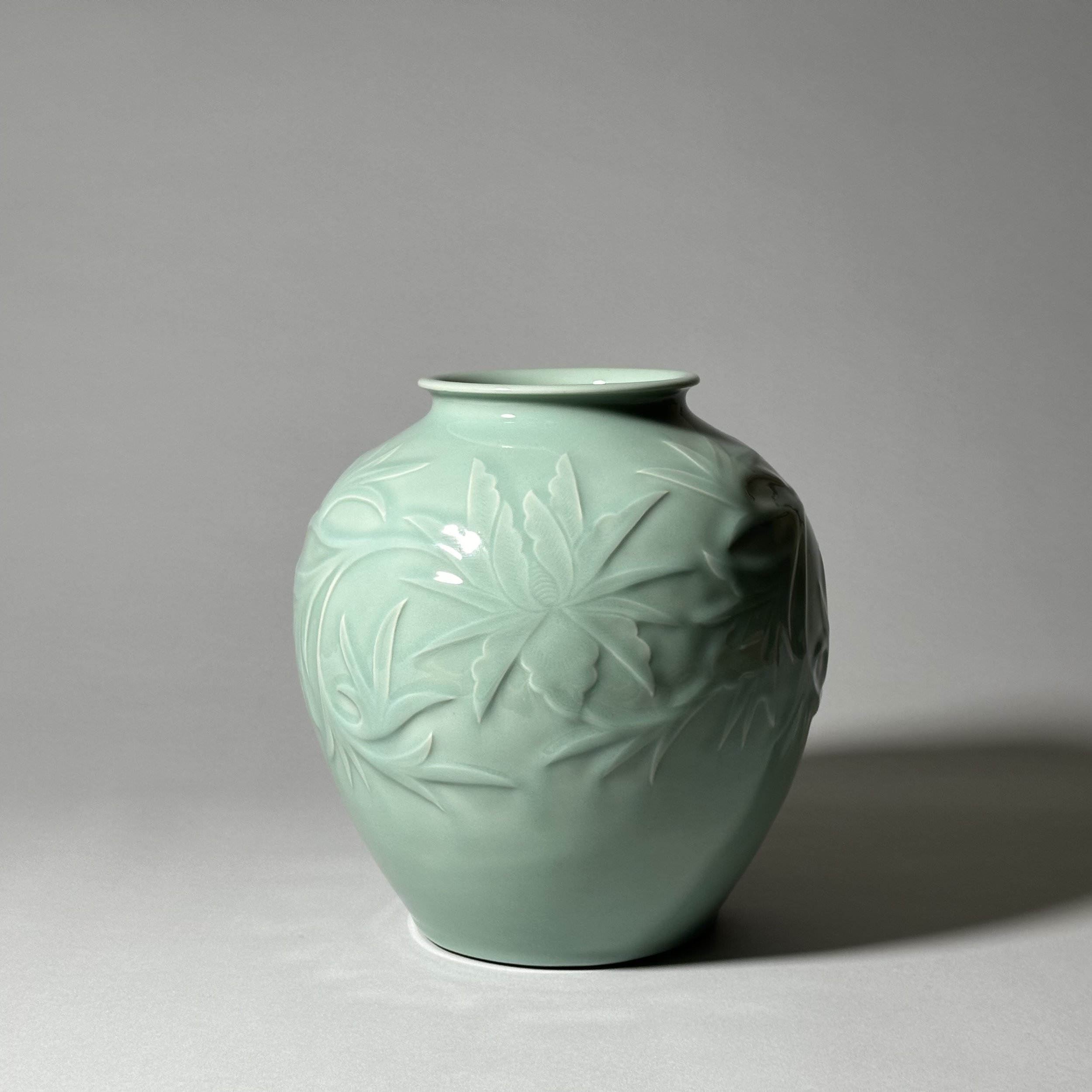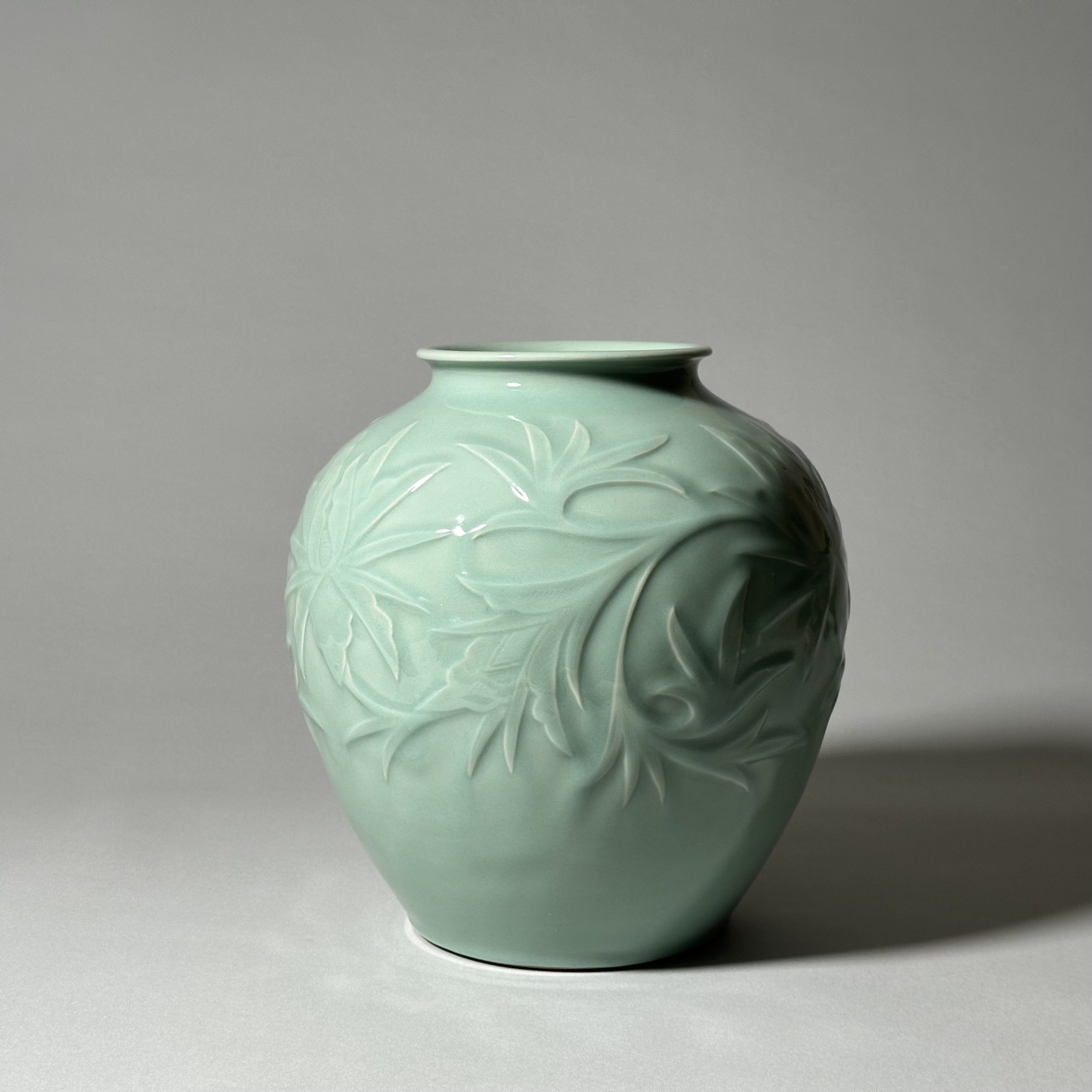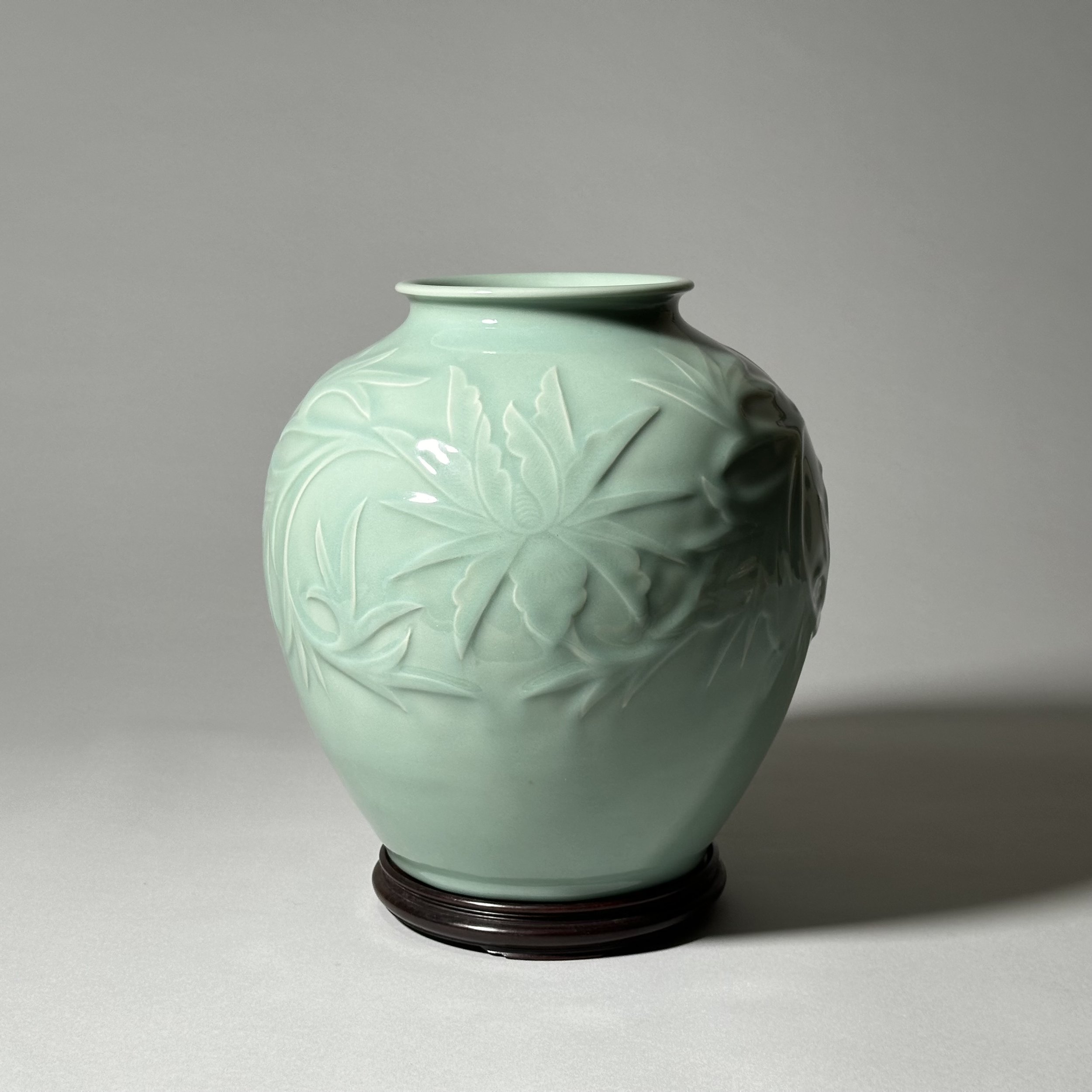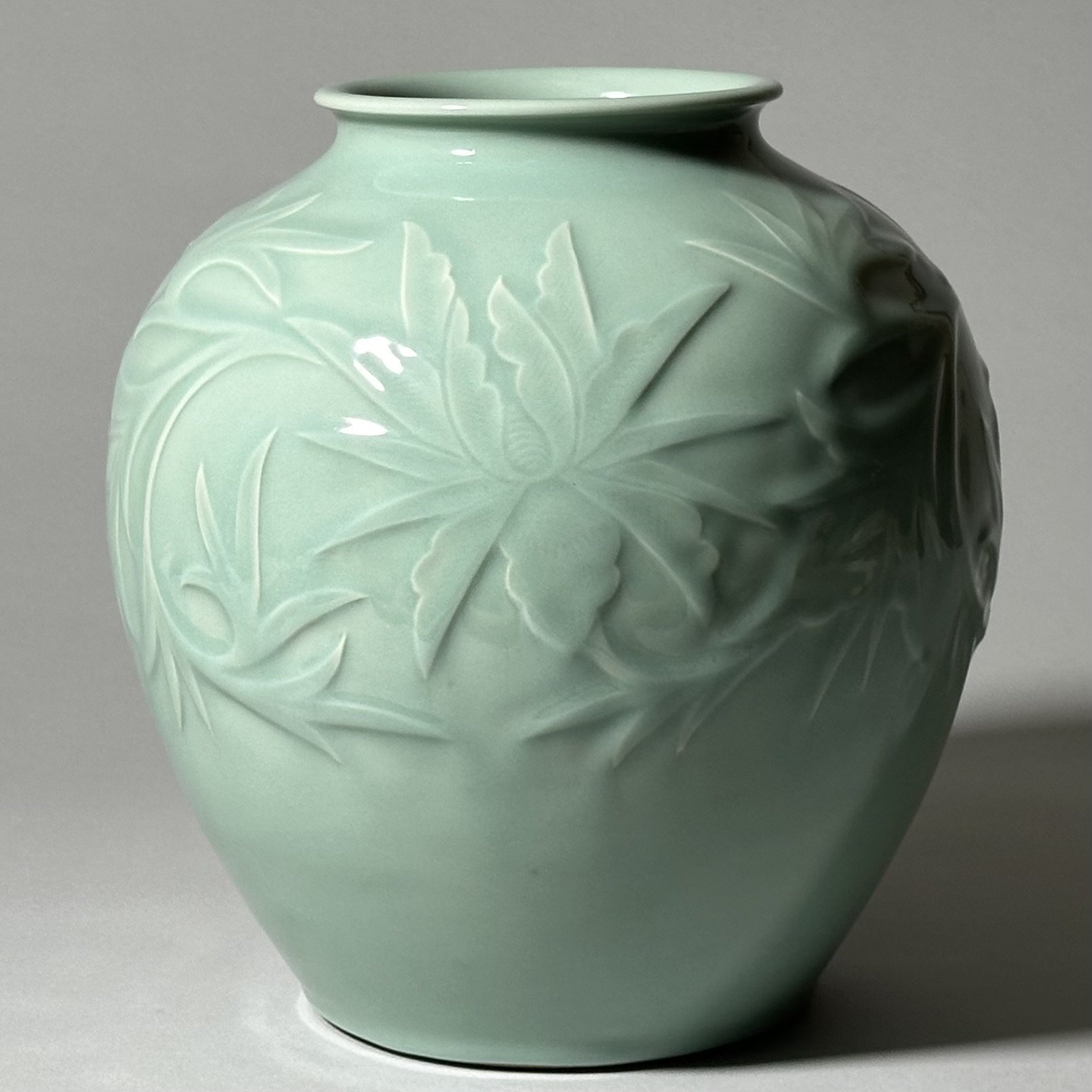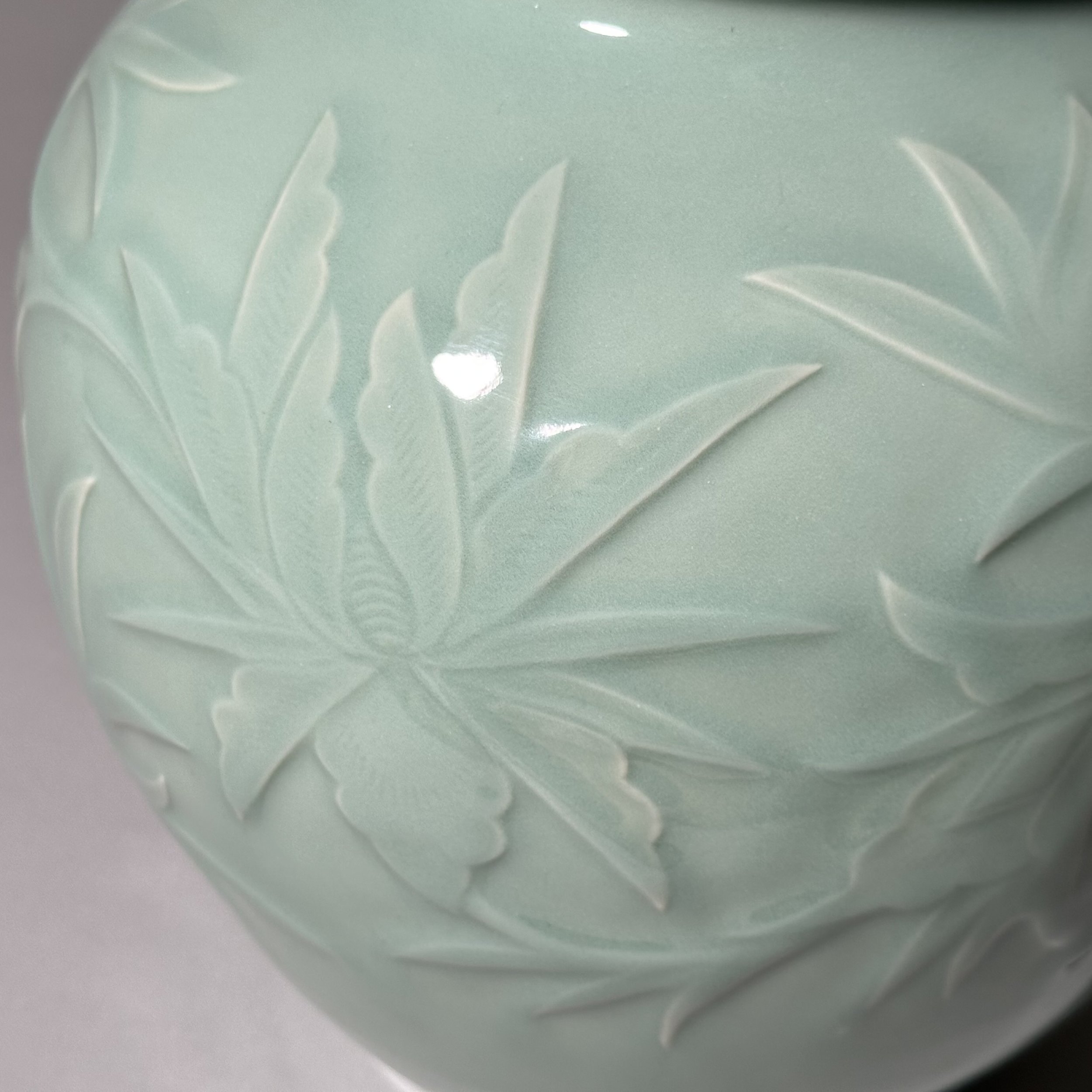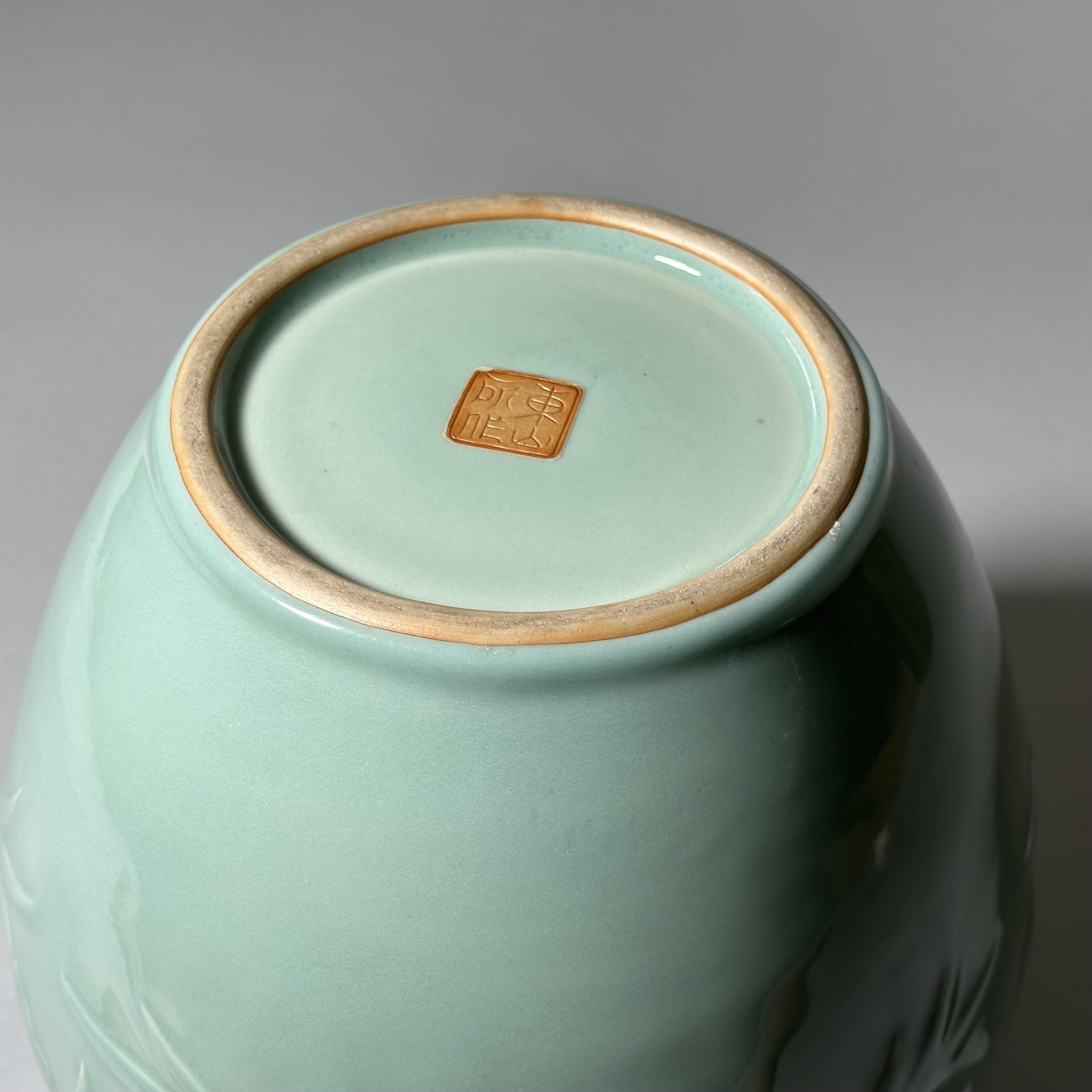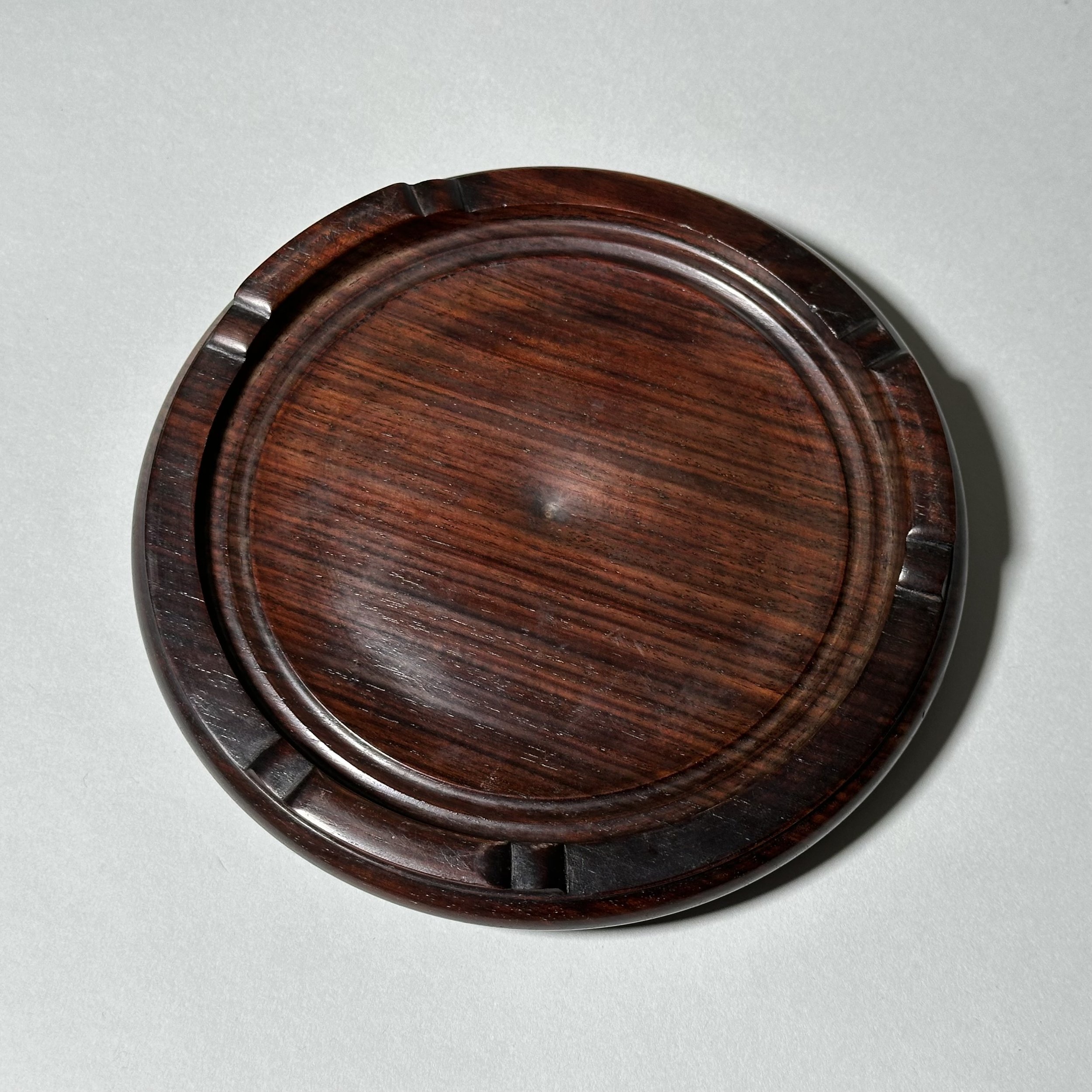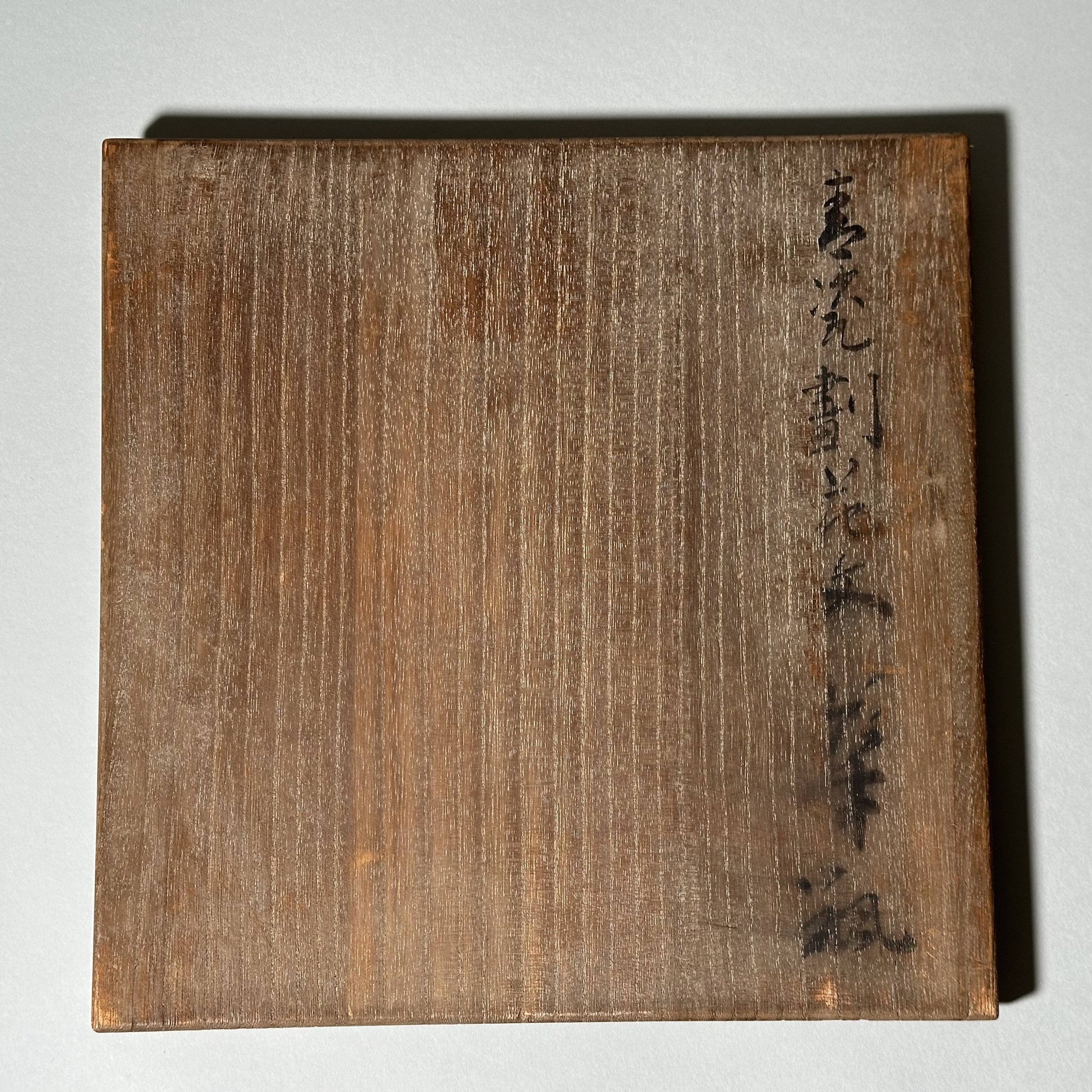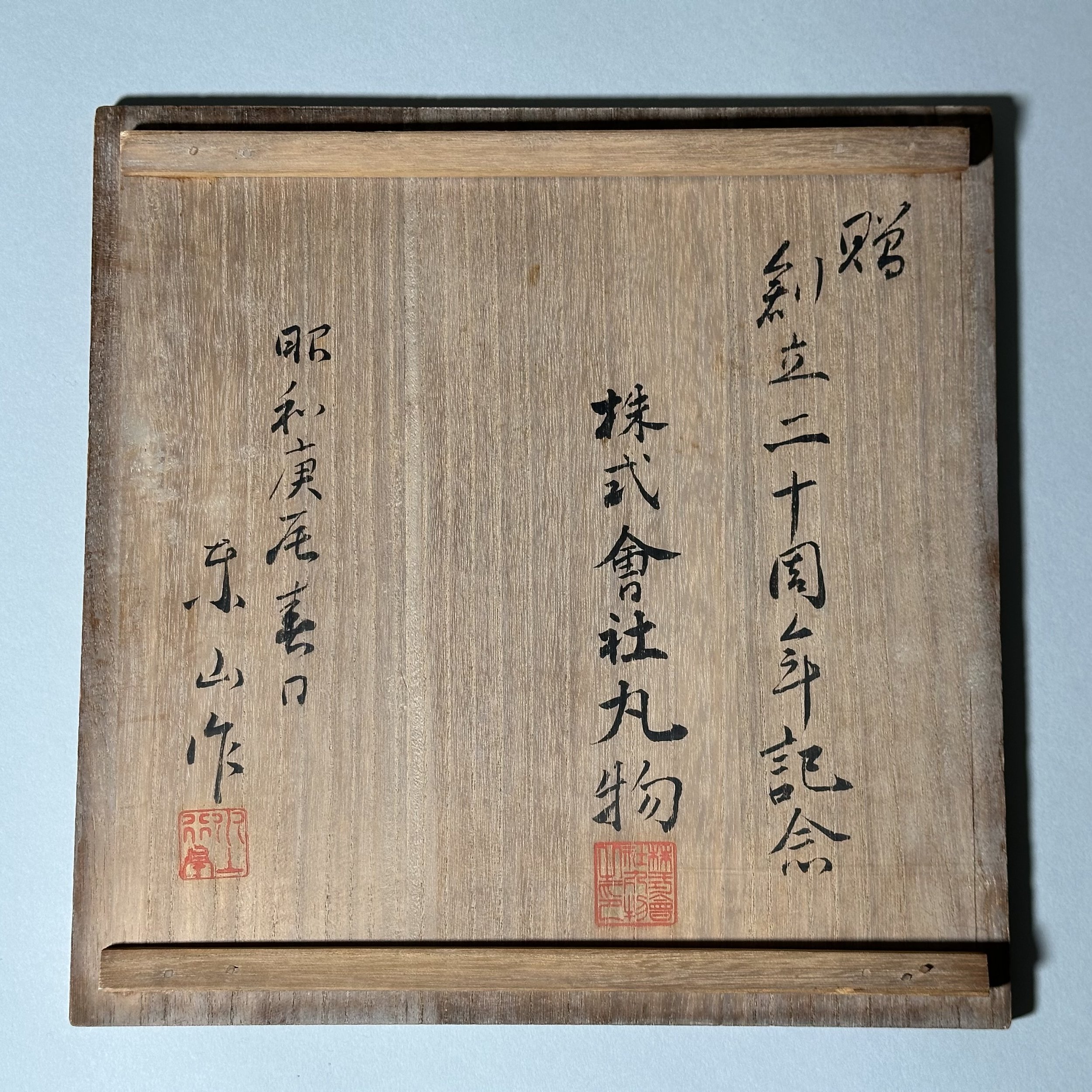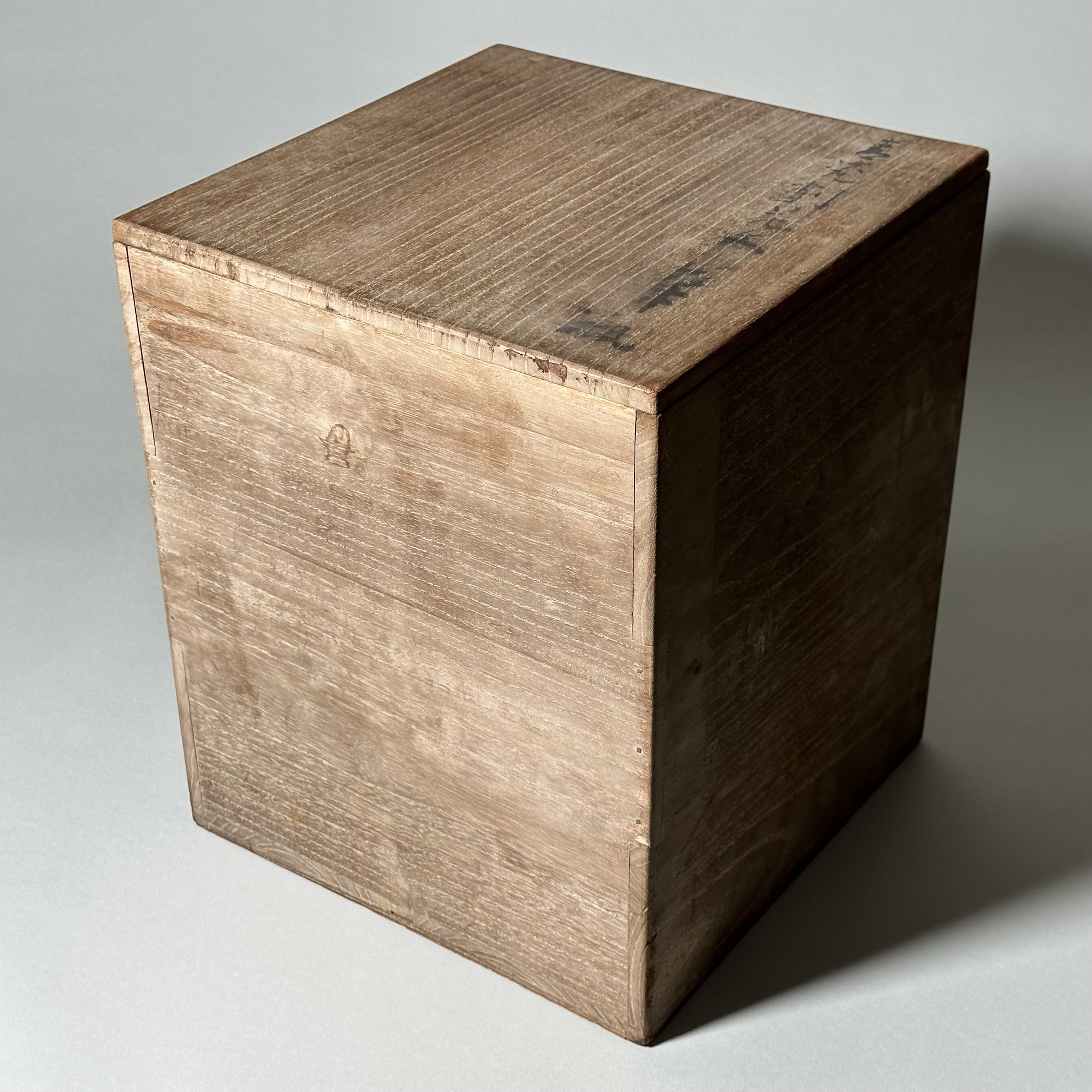Carved celadon vase by Miyanaga Tozan I (1868-1941)
Japan, Kyoto
Taisho (1912-1926) or early Showa (1926-1989) Period
Of ovoid-baluster form decorated with scrolling flowers, and covered in a rich sea-green celadon glaze. 30cm high, 26cm diameter. Together with the original signed box and original fitted hardwood Chinese-style stand.
Catalogue 348.
Miyanaga Tozan (1868-1941) appears to have had little education as a ceramicist himself but was well educated for his time and travelled to Europe around 1900. This allowed him to contrast Japanese ceramics with what he had seen in Europe and recognise their value. He returned to Japan and set up a kiln in the Fushimi district of Kyoto in 1910 where he specialised in the production of celadons. His early works show modern stylisation in their decoration but it was the later works around 1925 that were some of the first Japanese works to reflect the influence of European art deco. Like many of his confreres his work also shows Chinese and Korean influences. He really was the Taisho ceramicist par excellence and his work is characterised by its scale and its technical perfection. He is long overdue for reassessment.
Japan, Kyoto
Taisho (1912-1926) or early Showa (1926-1989) Period
Of ovoid-baluster form decorated with scrolling flowers, and covered in a rich sea-green celadon glaze. 30cm high, 26cm diameter. Together with the original signed box and original fitted hardwood Chinese-style stand.
Catalogue 348.
Miyanaga Tozan (1868-1941) appears to have had little education as a ceramicist himself but was well educated for his time and travelled to Europe around 1900. This allowed him to contrast Japanese ceramics with what he had seen in Europe and recognise their value. He returned to Japan and set up a kiln in the Fushimi district of Kyoto in 1910 where he specialised in the production of celadons. His early works show modern stylisation in their decoration but it was the later works around 1925 that were some of the first Japanese works to reflect the influence of European art deco. Like many of his confreres his work also shows Chinese and Korean influences. He really was the Taisho ceramicist par excellence and his work is characterised by its scale and its technical perfection. He is long overdue for reassessment.
Japan, Kyoto
Taisho (1912-1926) or early Showa (1926-1989) Period
Of ovoid-baluster form decorated with scrolling flowers, and covered in a rich sea-green celadon glaze. 30cm high, 26cm diameter. Together with the original signed box and original fitted hardwood Chinese-style stand.
Catalogue 348.
Miyanaga Tozan (1868-1941) appears to have had little education as a ceramicist himself but was well educated for his time and travelled to Europe around 1900. This allowed him to contrast Japanese ceramics with what he had seen in Europe and recognise their value. He returned to Japan and set up a kiln in the Fushimi district of Kyoto in 1910 where he specialised in the production of celadons. His early works show modern stylisation in their decoration but it was the later works around 1925 that were some of the first Japanese works to reflect the influence of European art deco. Like many of his confreres his work also shows Chinese and Korean influences. He really was the Taisho ceramicist par excellence and his work is characterised by its scale and its technical perfection. He is long overdue for reassessment.

